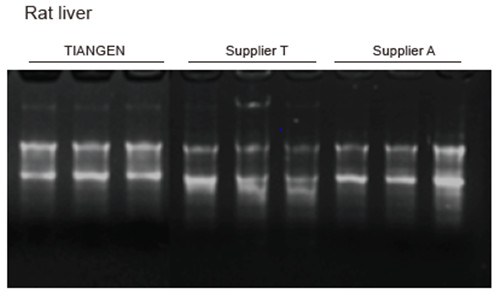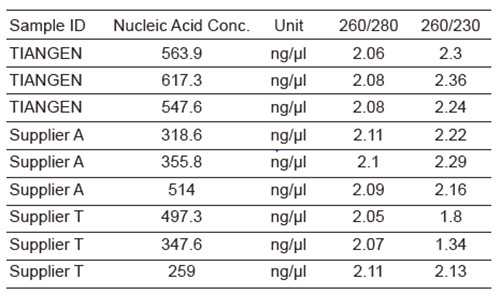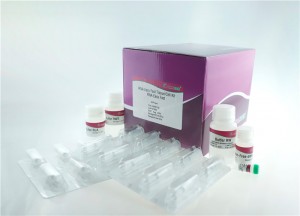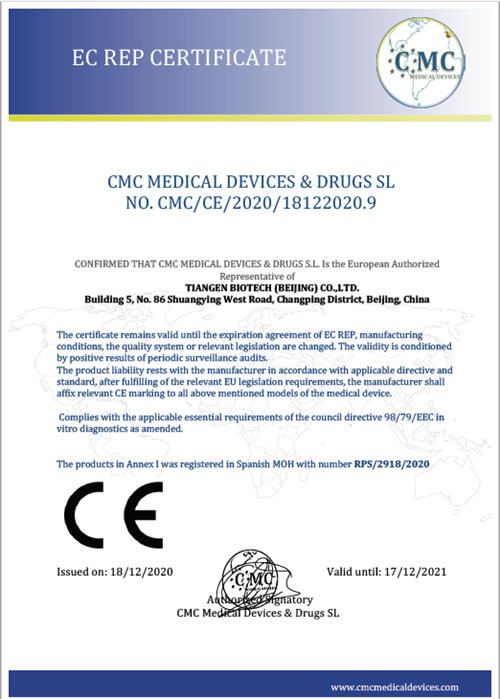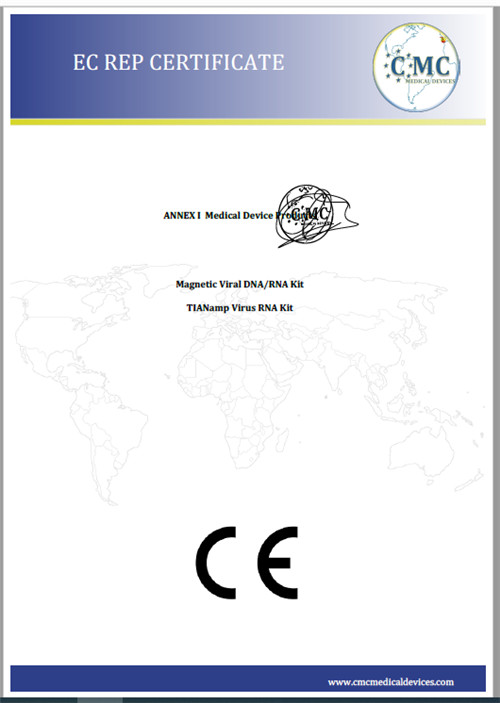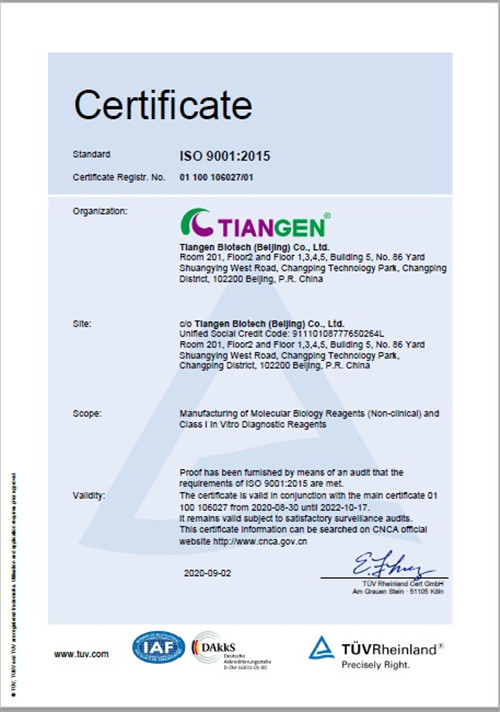A-1 Insufficient cell lysis or homogenization
---- Reduce sample usage, increase the amount of lysis buffer, increase homogenization and lysis time.
A-2 Sample amount is too large
----Please refer to the maximum processing capacity.
A-3 RNA is not eluted completely from the column
---- After adding RNase-Free water, leave it for a few minutes before centrifuging.
A-4 Ethanol in the eluent
---- After rinsing, centrifuge again and remove the washing buffer as much as possible.
A-5 Cell culture medium is not completely removed
---- When collecting cells, please make sure to remove the culture medium as much as possible.
A-6 The cells stored in RNAstore are not effectively centrifuged
----RNAstore density is greater than the average cell culture medium; so the centrifugal force should be increased. It is suggested to centrifuge at 3000x g.
A-7 Low RNA content and abundance in the sample
---- Use a positive sample to determine if the low-yield is caused by the sample.
